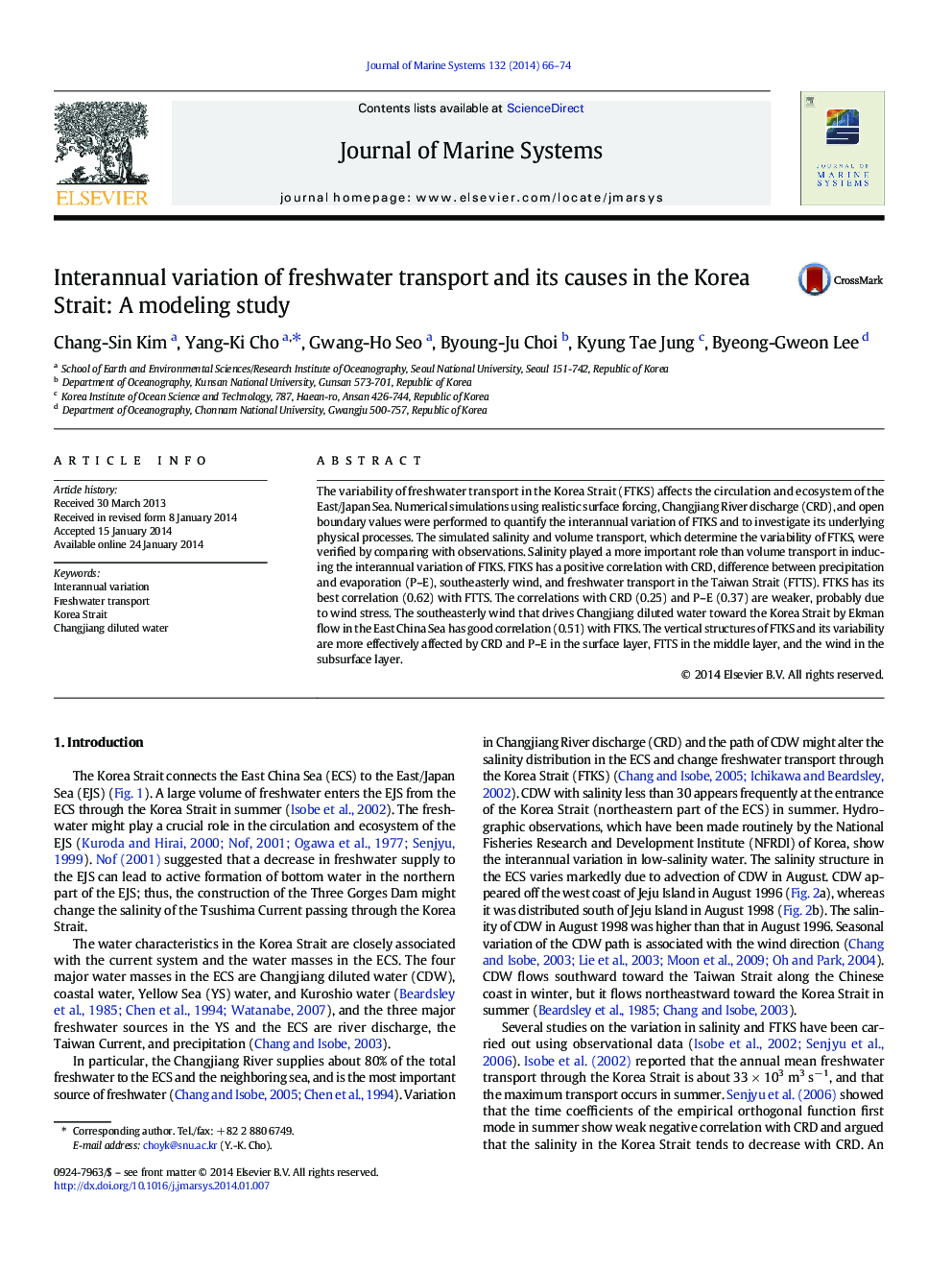| کد مقاله | کد نشریه | سال انتشار | مقاله انگلیسی | نسخه تمام متن |
|---|---|---|---|---|
| 6387021 | 1627297 | 2014 | 9 صفحه PDF | دانلود رایگان |
- Interannual variation of freshwater transport in the Korea Strait is quantified.
- Salinity is more important than volume transport for the variation.
- Major causes of the variation are wind and freshwater in the Taiwan Strait.
The variability of freshwater transport in the Korea Strait (FTKS) affects the circulation and ecosystem of the East/Japan Sea. Numerical simulations using realistic surface forcing, Changjiang River discharge (CRD), and open boundary values were performed to quantify the interannual variation of FTKS and to investigate its underlying physical processes. The simulated salinity and volume transport, which determine the variability of FTKS, were verified by comparing with observations. Salinity played a more important role than volume transport in inducing the interannual variation of FTKS. FTKS has a positive correlation with CRD, difference between precipitation and evaporation (P-E), southeasterly wind, and freshwater transport in the Taiwan Strait (FTTS). FTKS has its best correlation (0.62) with FTTS. The correlations with CRD (0.25) and P-E (0.37) are weaker, probably due to wind stress. The southeasterly wind that drives Changjiang diluted water toward the Korea Strait by Ekman flow in the East China Sea has good correlation (0.51) with FTKS. The vertical structures of FTKS and its variability are more effectively affected by CRD and P-E in the surface layer, FTTS in the middle layer, and the wind in the subsurface layer.
Journal: Journal of Marine Systems - Volume 132, April 2014, Pages 66-74
